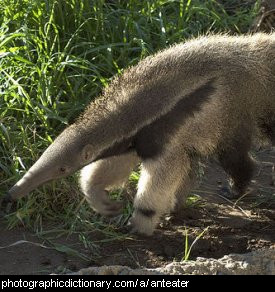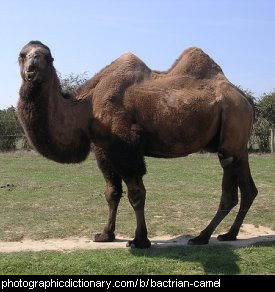Scientific name: orycteropus afer
Scientific name: vicugna pacos
Scientific name: myrmecophaga tridactyla
The anteater is an animal that, as its name suggests, eats mainly ants and termites. They have a long, sticky tongue that they flick into ant nests. There are four different types of anteater, the anteater in the picture is the giant anteater. They are related to sloths. Giant anteaters can grow up to 2.4 metres long, including their tail. Baby anteaters ride on their mother's back.
Antelope is a word used for any one of a large group of animals that are related to goats, sheep and cows. Many antelopes look like deer but are actually not closely related - antelopes keep their horns through their lifetime and deer shed their horns every year.
The antelope in the picture is an eland.
Scientific name: dasypus novemcinctus
Video: view
Bis forBactrian camel
Scientific name: camelus bactrianus
The bactrian camel is different to the dromedary camel because it has two humps instead of one. There are a lot less bactrian camels, and there are very few wild ones left.
Bis forBat (animal)
Scientific name: order: chiroptera
Scientific name: family: ursidae
Scientific name: bison bison
The American Bison is a very large type of cow. They once travelled in massive herds over America, but they were killed almost to extinction by people in the 19th century.
A bison has a shaggy, long, dark brown winter coat, and a lighter weight, lighter brown summer coat. Bison can reach up to 2 meters (6.6 ft) tall, 3 meters (10 ft) long, and weigh 400 kilograms (882 lb) to 1,000 kilograms (2,205 lb).


















